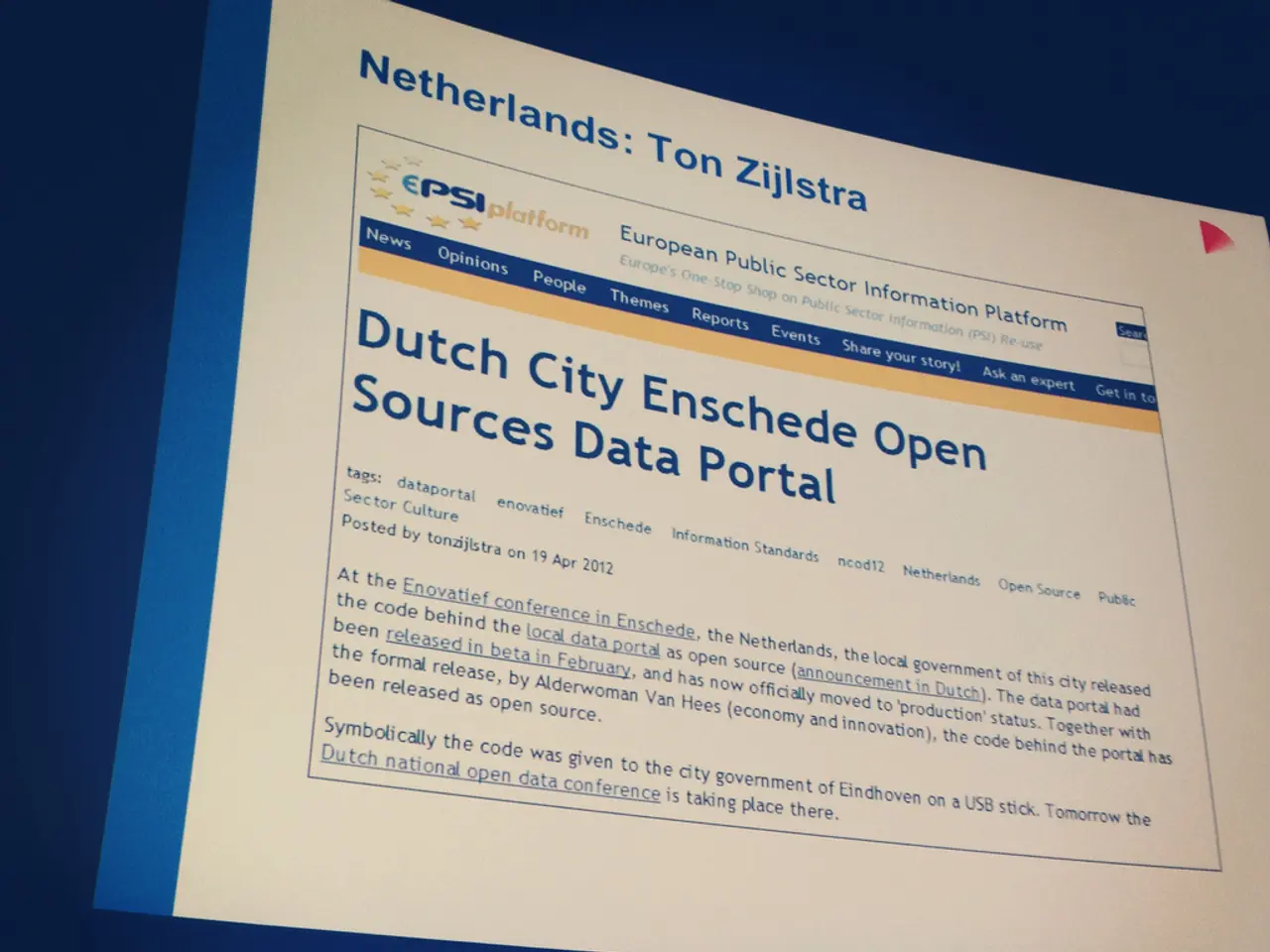Meta Reveals Emu Video: Transforming Text into Videos using Image Modification
In the realm of artificial intelligence, a groundbreaking development has taken place with the introduction of Emu Video, an advanced tool designed for text-to-video generation. This innovative system, which leverages explicit image conditioning to enhance output quality and user control, is set to redefine the way we approach text-to-video synthesis [1][4].
Emu Video's unique approach involves a factorization of the generation process into two distinct stages: image generation and video generation. In the first stage, a diffusion model generates a high-quality image directly from a text prompt. This image serves as a starting point for the second stage, where another diffusion model generates a video based on both the original text prompt and the image created in the first stage [1].
This two-stage, factorized method offers several advantages over traditional, cascaded architectures. It simplifies the pipeline, streamlines training, improves efficiency, and maintains high visual quality and faithfulness to the text prompt [1][4].
The benefits of this approach are manifold. Emu Video's outputs, 512px, 4-second-long videos at 16fps, have been found to be more convincing and true to the prompt compared to other state-of-the-art models like Make-a-Video (MAV), Imagen-Video (IMAGEN), and Pika Labs (PIKA) [1]. Moreover, the explicit conditioning on an image derived from the text gives users more direct control over the content and style of the generated video [1].
The factorized approach also makes the training process more manageable and resource-efficient. Instead of requiring a deep cascade, Emu Video uses only two diffusion models [1].
The image factorization strengthens the overall conditioning signal, providing vital missing information to guide the video generation process. The generated image acts as a starting point that the model can then imagine moving and evolving over time based on the text description [1].
Directly predicting a sequence of video frames from only text input is challenging due to the high dimensionality and multi-modality of the video space. Existing text-to-video systems often struggle to generate consistent, realistic results at high resolution. Emu Video addresses these challenges by using a multi-stage training approach, first training on lower resolution 256px videos and then fine-tuning on higher resolution 512px videos [1].
The gains are especially pronounced on imaginary text prompts that describe fantastical scenes and characters, producing more creative, stylistically consistent videos [1]. Furthermore, Emu Video's training scheme includes the Zero Terminal SNR Noise Schedule, which improves video stability by learning greater robustness when sampling from pure noise at test time [1].
In rigorous human evaluation studies, Emu Video's results have been found to better reflect the semantic content of the text prompts in both the spatial layout and temporal dynamics [1]. As we look to the future, the world of translating language into realistic and creative videos promises to be a vibrant and ever-evolving field, with rigorous research continuing to push the boundaries [5].
For those interested in exploring the world of image editing, it's worth checking out Emu Edit, a similar project focused on editing images [2].
The Text-to-Video Challenge involves creating automatic systems for generating videos from text, with applications in areas like automated visual content creation, conversational assistants, and bringing language to life as video [3]. Emu Video's factorized text-to-video generation not only simplifies the pipeline but also results in higher-quality, more controllable, and efficient video synthesis from text prompts [1][4].
[1] Coalition for Text-to-Video Models. (n.d.). Emu Video. Retrieved from https://www.ctvm.ai/emu-video [2] Coalition for Text-to-Image Models. (n.d.). Emu Edit. Retrieved from https://www.ctim.ai/emu-edit [3] The Text-to-Video Challenge. (n.d.). Retrieved from https://text-to-video.github.io/ [4] Ramesh, R., Hariharan, B., Hsu, J., Zhang, M., Chen, X., Koh, P., ... & Ajao, A. (2022, May 23). High-Resolution Image Synthesis with Text-Guided Diffusion Models. arXiv preprint arXiv:2205.11444. [5] The Future of Text-to-Video Generation. (n.d.). Retrieved from https://www.ctvm.ai/blog/future-text-to-video-generation
Artificial intelligence's advancement in technology, particular in the domain of text-to-video generation, is revolutionized by Emu Video, an innovative system leveraging image factorization for improved quality and user control. This factorized approach simplifies the pipeline, enhances efficiency, and produces videos of higher visual quality and faithfulness which surpass other state-of-the-art models.




